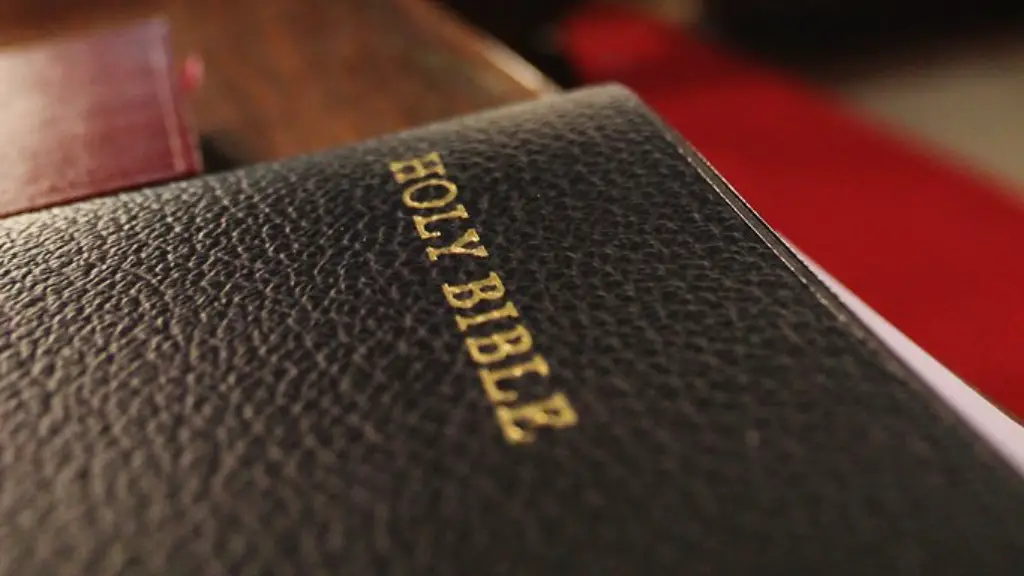Beliefs about what angels look like in the Bible vary greatly from one Christian sect to another. Most describe angels as having a human form, with wings and a halo. They are often portrayed as having bodies of light or flame, although many denominations do not require this image. Some believe that angels are actually humans with special abilities, as evidenced by their interactions with humans in the Bible.
The Bible does not give a definitive answer regarding the physical appearance of angels, so it is left up to interpretation. Different Christian groups have different beliefs about the appearance of angels, depending on how literally they interpret the Bible. Some believe that angels have four faces, including those of a man, a lion, an ox, and an eagle. Others believe that angels have the ability to take on a more human-like form, with wings and a halo around their head.
Angels in the Bible can be described in more than a physical form. Often they are used to represent power, strength, and protection. Angels are seen as messengers of God, delivering God’s will to humanity. Some denominations believe that angels are sent to protect humans, while others believe angels are sent to punish those who fail to obey God. Regardless of the interpretation, angels in the Bible act as the direct link between God and humanity.
Angels are said to be made of fire or light in some biblical passages. In addition, some references to angels describe them as being able to fly and having a unique beauty not found in humans. This might be interpreted as meaning that angels are created from a supernatural source and have unique powers. For example, in the Gospel of Luke, an angel appears to the shepherds to announce the coming of the Messiah.
Though the Bible does not explicitly describe what angels look like, it does provide some clues as to what they are. Angels appear in many stories in the Bible and have specific qualities associated with them. They are sent by God to carry out his will and to protect and serve us. Whether they have wings, halos, flaming gowns, or are simply light, angels are seen as divine messengers.
Angelic Origins
The concept of angels as divine messengers comes from the Bible. They are referred to in the Old Testament, specifically in the books of Genesis, Exodus, Numbers, and Ezekiel. Angels were used to communicate the word of God to humans, and were seen as a symbol of protection and power. In the New Testament, angels appear prominently in the Gospels, most notably in the annunciation of the birth of Jesus.
The origin of angels likely predates the Bible. Ancient civilizations such as the Babylonians and the Greeks and Romans believed in the existence of powerful, divine protectors. These protector deities were sometimes depicted as winged creatures with human-like qualities, and many of these traits were adopted by the Jewish, Christian, and Islamic faiths.
Some believers also speculate that angels had a more physical manifestation in ancient times. They suggest that angelic sightings in the Bible are evidence that angels were once visible to humans. This theory has not been proven, but it remains an interesting idea.
Angelic Powers
Most Christians view angels as being created by God with a specific purpose. They are spiritual beings, with the power to perform acts that humans could not. In the Bible, angels often appear to humans in order to deliver a message or carry out a task. They are seen as powerful, benevolent protectors of humanity.
Additionally, some denominations believe that angels have special abilities, such as the ability to move between Heaven and Earth. Angels in the Bible are said to have the ability to transform or intervene in human affairs. For example, the Archangel Gabriel appeared to the Virgin Mary to announce that she would be the mother of Jesus.
The Bible also mentions angels having special powers such as healing and prophecy. Angels are also seen to have the ability to manifest themselves in more human forms, while still retaining a divine presence.
Placement of Angels in the Bible
The placement of angels in the Bible is an important factor in understanding their role in the story. Angels appear mainly in the Old Testament, though there are also references in the New Testament. In the Old Testament, angels are often mentioned during an event or in reference to an event that is about to happen.
The New Testament presents angels in a different manner. They tend to appear in stories to interact with humans. In Luke, an angel appears to the shepherds, announcing the birth of Jesus. In Matthew, an angel comforts Jesus in the Garden of Gethsemane. Finally, in Acts, an angel releases the apostles from prison.
The placement of angels in the Bible is thought to be symbolic. Angels often appear before important events, indicating that there is a power greater than the humans. They often appear as a sign of comfort, reminding humans that they are not alone.
Biblical Interpretation of Angels
The interpretation of angels in the Bible varies greatly among denominations. For example, many Protestants believe that angels exist only to protect and serve humans, while some Catholics believe that angels also can inflict punishment on those who disobey God. The interpretation of angels also tends to be influenced by the cultural context from which it is derived.
Regardless of the interpretation, angels in the Bible are seen as divine messengers from God. They are spiritual beings with the power to deliver God’s word, protect and guide us, and even intervene in the affairs of humans.
Heavenly Hierarchy of Angels
Some Christians believe that angels are organized into a heavenly hierarchy. This hierarchy is often believed to be arranged around nine orders of angels. The highest order is the seraphim, followed by the cherubim, thrones, dominations, virtues, powers, principalities, archangels, and finally angels.
These orders are derived from passages in the Bible, though some also believe that the hierarchy is based on Judaic mysticism. This hierarchy is often used as a way of understanding the structure and function of angels in the Bible. It helps to organize the roles and duties of each order, and gives believers a mental image of how the celestial army might be organized.
Angels In Modern Christianity
Beliefs about angels have remained consistent across the centuries, though some denominations have adopted practices or beliefs that are not found in the Bible. For instance, some Christians believe that angels can help in times of need, and pray for God to send an angel to offer guidance or protection.
Others, however, caution that this is not supported by the biblical texts. They point to passages in the Bible which speak of angels as divine messengers, and not as all-knowing advisers. They also point to passages which speak of the need to trust in the Lord, and not rely on supernatural help.
Despite these differences in belief, the role of angels in the Bible remains largely consistent across denominations. Angels are seen as powerful spiritual beings, sent by God to protect and serve us. They are messengers of God, and a reminder of the power of the Divine.




